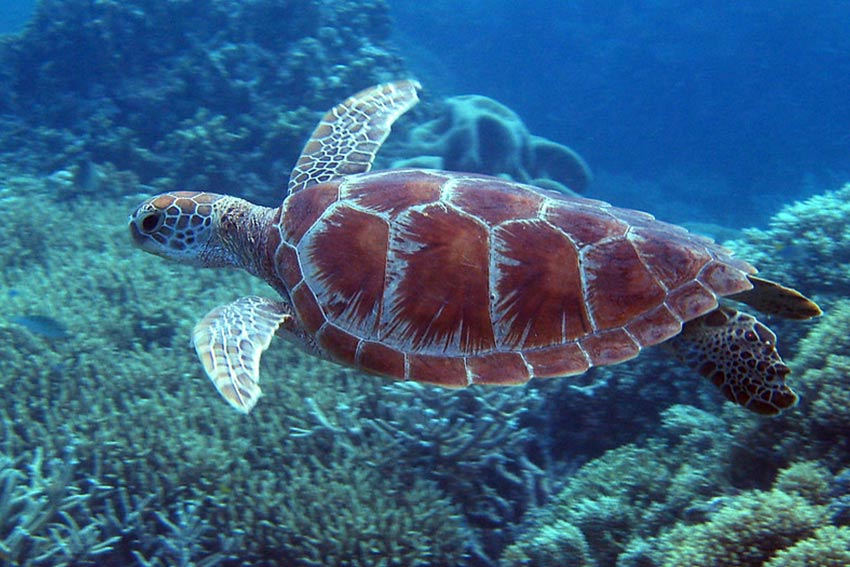Robot turtles for ocean conservation

Using underwater drones to film wild sea turtles on Australia's Great Barrier Reef has allowed AUT scientists to better understand the movements of these efficient swimmers, which can migrate thousands of kilometres through the ocean each year.
The paper, New insight into the swimming kinematics of wild green sea turtles (Chelonia mydas), published today in Nature – Scientific Reports, paves the way for AUT’s BioDesign Lab team to develop technologies that mimic turtle swimming patterns and flipper movement – including the creation of a highly efficient turtle-inspired underwater drone that can contribute to the conservation and monitoring of key species in our ocean environment.
To gather video footage of the turtles, AUT’s Dr Lorenzo Garcia and PhD student Nick van der Geest spent three weeks off Queensland’s Fitzroy and Heron islands, before analysing a terabyte of data to model the animals’ forelimb movements alongside AUT Associate Professor Roy Nates.
The analysis led to the discovery that wild green sea turtles’ five-stage swimming patterns differ to those described in previous studies of juveniles in captivity.
“Biomechanically, sea turtles can be likened to birds, as they glide through the ocean flapping their forelimbs, which makes them an interesting animal to study,” says Dr Garcia, who leads the BioDesign Lab’s research into biomechatronic design and musculoskeletal biomechanics.
“Using underwater videography allowed us to study these endangered or vulnerable, protected species in the wild, with minimal disturbance,” he says.
In 2021, Dr Garcia secured $200,000 from the New Zealand Government’s Science for Technological Innovation fund to develop a bio-inspired underwater robot. The results of this research bring Dr Garcia and his team closer to this goal.
Assisting with the field work in Queensland and analysis of footage was Dr Daniel Godoy, a marine scientist specialising in sea turtles at Blue Planet Marine. Also instrumental in the success of this research was Jennifer Gilbert and the team at Cairns Turtle Rehabilitation Centre, Gowings Whale Trust, Fitzroy Island Resort, MAG Assembly, AGE School and staff at the University of Queensland’s Heron Island Research Station.